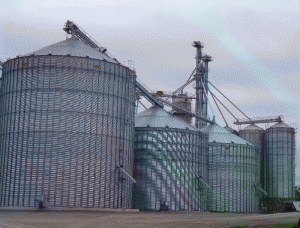Market side: Futures trading basics
LESSON 16: FUNDAMENTAL ANALYSIS

This monthly educational series will feature the basic workings of the futures and options markets and how they can be utilized to help farmers with risk management.
WITH REGARD TO using fundamental analysis in your grain trading decisions, it is important to realize that you are likely to have somewhat of an information disadvantage relative to some market participants. Speculators try to benefit by being on the right side of price movements, while hedgers attempt to remove the risk associated with future price movements from their business.
Since fundamental analysis is defined as the study of the factors that affect supply and demand, the key to fundamental analysis is to gather and interpret this information and then to act before this information is incorporated into the futures price. This lag time between an event and its resulting market response presents a trading opportunity for the fundamentalist.
In some markets (such as equity or interest rate futures), it is theoretically possible for an individual to have nearly as much information to conduct an analysis as a bank or institutional investor. In other markets, this is just not practical.
The U.S. Department of Agriculture (USDA) releases monthly and quarterly reports that supply statistics. The fundamental trader puts all these factors into sophisticated models to try to determine where the price of grains and other agriculture products are headed. If you are trading corn, no matter how many reports you read on the state of the market, you are unlikely to have as firm of a grasp on the fundamentals as a major corn trader such as Archer Daniels Midland (ADM), Bunge, Cargill or Louis Dreyfus. Similarly, in the oil market, Exxon or Royal Dutch Shell are likely to have a better feel on the supply and demand in the oil market for the next six to twelve months than even the most well-informed individual trader.
Despite this information disadvantage, it is important to be as well-informed as possible about your chosen markets, with regard to current events. Remember, grain or oil companies are interested in hedging their forward production, not exploiting daily price movements, and they are so large that their trades can be cumbersome. As an individual, you have the ability to be more nimble and opportunistic than some larger institutions.
It’s important to keep abreast of major developments in the chosen market you wish to trade, but using news items to execute trades is generally not a good idea as most newsworthy items are already factored into the price of the underlying commodity. •
Marty Hibbs is a 25 year veteran futures trader, analyst, and portfolio manager. Hibbs was a regular guest analyst on BNN for four years. He is currently a grain merchandiser with Grain Farmers of Ontario.
|
Lesson Definitions: WASDE Report: or World Agricultural Supply and Demand Estimates is a monthly report published by the United States Department of Agriculture (USDA) providing comprehensive forecast of supply and demand for major crops (global and United States) and livestock (U.S. only). The report provides an analysis of the fundamental condition of the agricultural commodity markets for the use of farmers, governments, and other market participants. |
DISCLAIMER: This information has been compiled from sources believed to be reliable, but no representation or warranty, express or implied, is made by the author, by Grain Farmers of Ontario, or by any other person as to its accuracy, completeness or correctness and Grain Farmers of Ontario accepts no liability whatsoever for any loss arising from any use of same.








